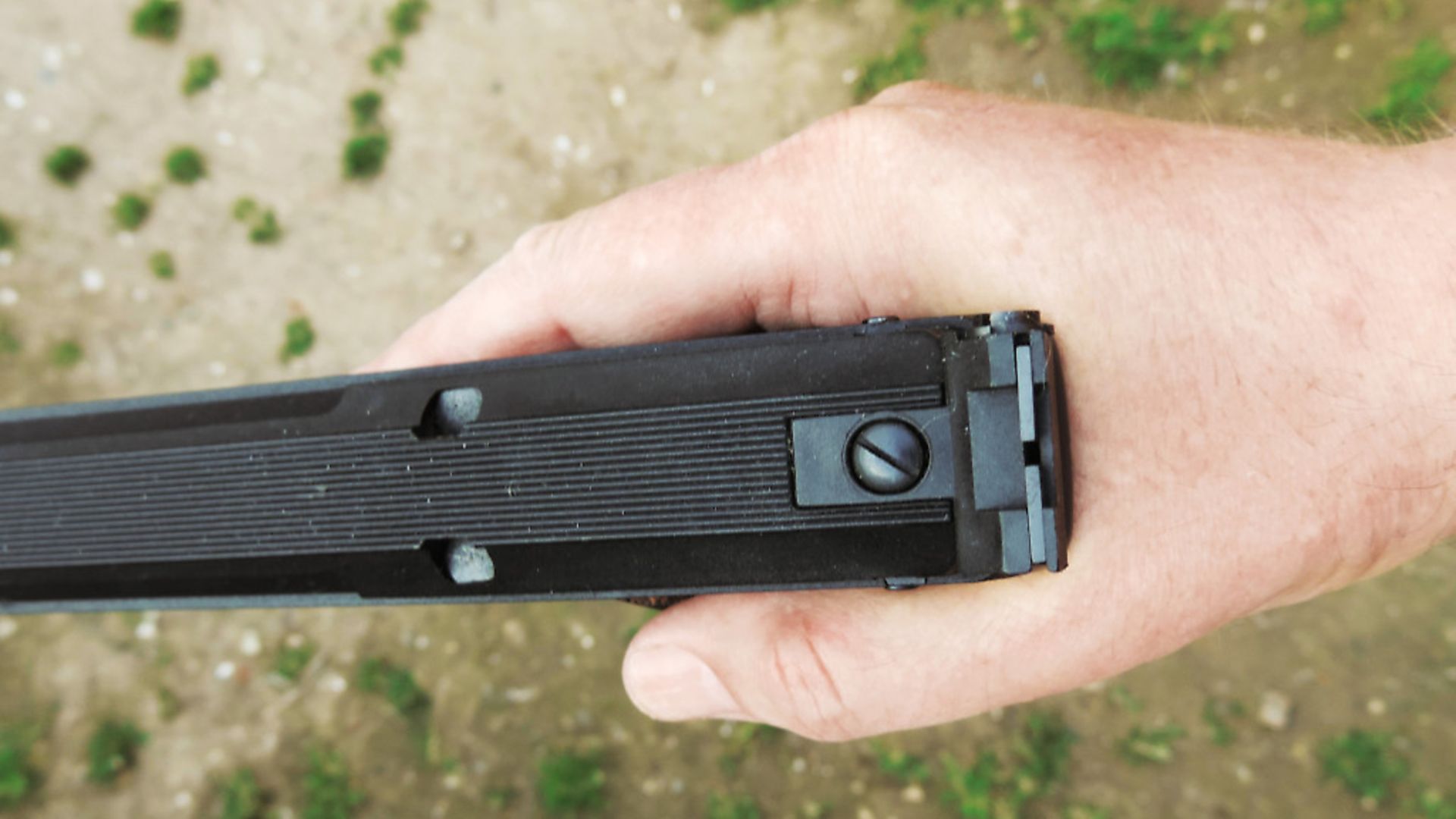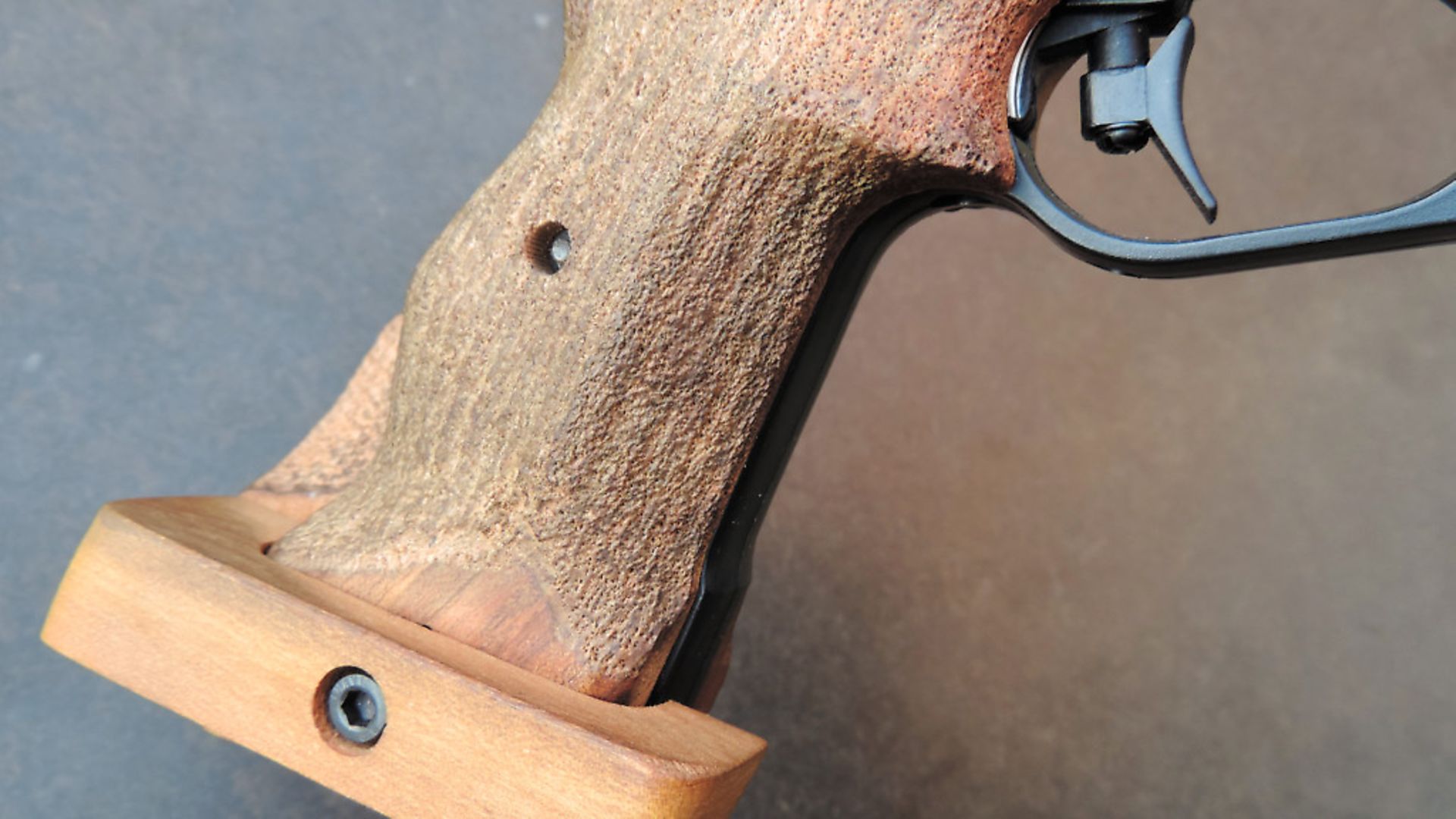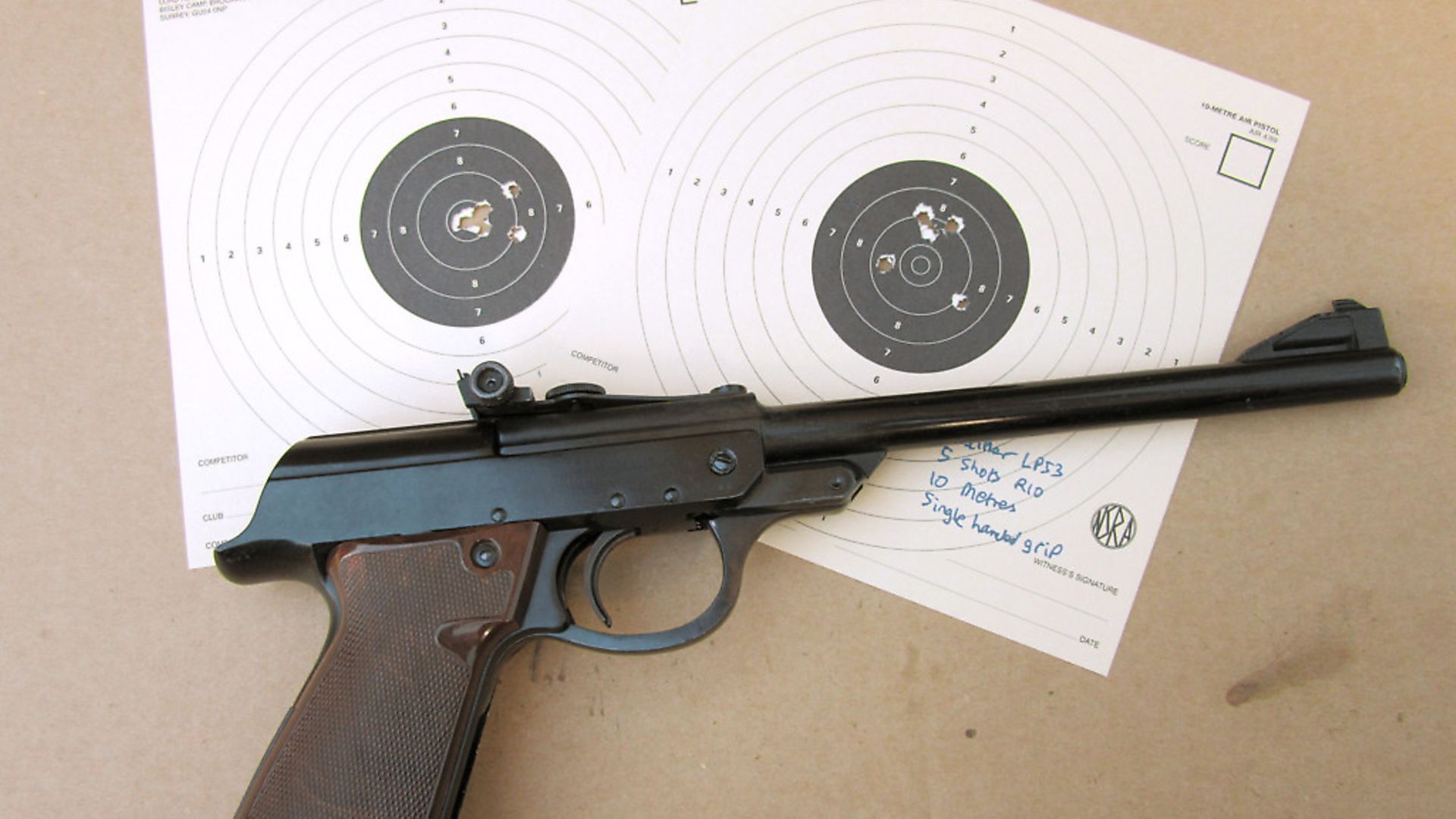John Milewski gets to grips with another vital part of accurate pistol shooting
 credit: Archant
credit: Archant
Have a look at John Milewski’s essential pistol target shooting techniques here!
Match air pistols are among the most specialised of all airguns and are capable of landing pellets on top of each other at a distance of 10 metres. As a former air pistol competitor myself, I can confirm that this happened to me on numerous occasions. I would fire five shots, but only see four holes in the card target. As the holes were centrally placed, I know that I did not miss the target, and handling such an accurate arm filled me with considerable confidence whenever I entered a competition.
Not everyone has a need for such an arm, and not many can justify a purchase around a thousand pounds unless they choose to enter the immensely challenging and rewarding sport of 10-metre match shooting. What you can do is apply some of the techniques used by match shooters to improve your own accuracy potential. So, if your target is a tin can in the back garden or an informal pellet tin lid on the range, read on and you will soon be hitting the mark more often.
 credit: Archant
credit: Archant
Consistency is all
Match shooting is all about consistency. That means doing exactly the same thing every time you raise your pistol and take aim. All a match pistol does is make it easier for you to do so. Take the grip as an example; on a match air pistol, you will see an adjustable palm shelf and a contoured grip that is designed to sit snugly in your hand and in the same way for every shot. Some grips come in different sizes and are designed to fit the right or left hand because a true match pistol is never ambidextrous. If you hold your pistol in the same way for every shot, that is one less worry and one more step toward consistency.
Consistent hold is not impossible with a standard air pistol. Having a thumb rest can help, but even an ambidextrous air pistol, such as a pre-war Webley can be held in the same manner for every shot. Muscle memory plays a part and whenever I test a different design of airgun, I spend as much time as I can on the range, getting to know the gun. I won’t try for tight groups straight away, but I’ll look for the best way to hold the arm consistently, and in time, muscle memory enables me to do so.
 credit: Archant
credit: Archant
Pressure
The amount of pressure you apply when you hold an air pistol also plays a part, especially with recoiling spring guns. As with an air rifle, the tighter you grip a pistol, the harder it is to apply the same amount of pressure consistently for every shot, and inconsistent hold equals inconsistent results downrange. So, my tip is to hold the pistol as loosely as you can and let it recoil naturally. A match pistol will sit in the hand almost like a glove, due to its hand-hugging grip, and competition shooters hold it firmly enough to keep it on aim with no additional gripping.
 credit: Archant
credit: Archant
Something to try
Try this: Raise a pistol and apply a light grip with the middle finger only. Do not grip with the fourth and little fingers, and do not grip with the index finger, which should be used to press the trigger only. A vintage Webley pistol balances well enough for this technique to be successful and I have also used it with a CO2 powered Crosman 150. However, with a Weihrauch HW45, I add a light grip with the fourth and little fingers for added stability due to the pistol’s bulk and heavier recoil on full power.
 credit: Archant
credit: Archant
Most difficult skill
Holding an air pistol steady with one hand is the most difficult of all airgun skills to learn. Some FT and HFT shooters fear standing shots, but they can support their rifles with their skeletal frames. All a pistol shooter has is their outstretched arm! ‘Difficult’ does not mean ‘impossible’ though, and practice will eventually make perfect. Holding a weight at the end of an outstretched arm is not natural and match shooters train themselves by holding their pistols as steady as they can for a set time every day. You do not need to fire any shots to become better at holding a pistol, but you do need to ensure that it is unloaded, by checking and checking again when you pick it up.
If you lean back toward the opposite side of the arm holding the pistol, this helps to counterbalance the aim. For a right-handed shooter, lean back with the left shoulder enough to stabilise the hold. Do not exaggerate the lean, and remember to stay comfortable because you will be using this hold a lot and will need to be consistent for it to be of any benefit.
Keep at it
Using the above techniques will help you to achieve consistent shooting results, whether you decide to shoot match cards at 10 metres, or more informally in the back garden. They may feel uncomfortable at first, but keep on with the practice and eventually, you will find that the position stabilises and your accuracy increases. There is a lot more to successful match shooting that can also be applied more informally, and I will share some of these techniques over the coming months. Until then, practise that hold.